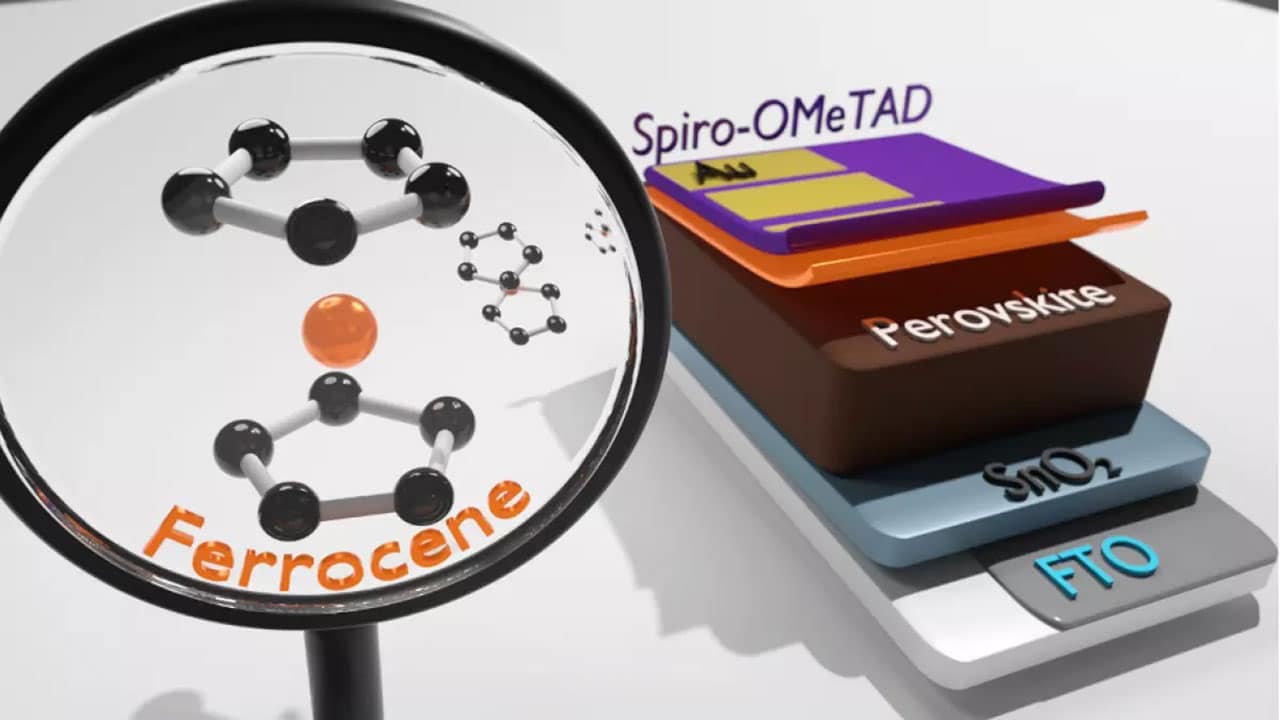
In recent years, metal halide perovskites have drawn increasing research attention as a promising light-harvesting layer for photovoltaic devices. Perovskite materials are widely considered to be the successor to silicon because they are lightweight and far cheaper to produce. However, the promise of perovskite has yet to be realized because of the difficulty of replicating lab results in mass production.
Now, a group of researchers led by the University of Surrey has discovered a new material that has been heralded as the key to producing more efficient next-generation solar panels and could soon be ready for mass production.
Researchers fabricated a perovskite solar cell that integrates a ferrocene co-mediator interlayer at the interface between the spiro-OMeTAD hole transport layer (HTL) and the active perovskite material. The Surrey team found that fusing perovskite materials with Ferrocene dramatically increases the efficiency of perovskite-based solar panels. It also stabilizes the drop in energy that all solar panels have over time. Not to mention it is cheap to produce and solves the water absorption problem.
“Silicon cells are efficient but costly to produce; perovskite materials are without a doubt the next generation of photovoltaic technologies,” said Dr. Wei Zhang, the primary supervisor of the research and project lead from the University of Surrey. “There is still a long way to go to ensure these can be implemented on a mass scale, but with these results, we are a generous step closer to making this a reality.”
Remarkably, the perovskite solar cell prepared with Ferrocene retains 70% of the initial power conversion efficiency (PCE) after 1,250 hours stored at 60 °C and 50% relative humidity, compared to only 8% in the conventional control cell. It is also identified that Ferrocene improves carrier separation at the perovskite/HTL interface, leading to fast hole extraction and high charge transfer yields. Without any conventional perovskite passivation procedure, the devices with a ferrocene co-mediator interlayer exhibited a power consumption efficiency of 23.45%, a significant increase over the 21.61% recorded in the control devices.
“This is a key development to advance this important new material system at a time when dependable renewable energy sources are of critical global importance. This is also a very satisfying example of how interdisciplinary research and complementary expertise across the partner universities has led to a high impact outcome,” said Professor Stephen Sweeney, the co-supervisor of the research from the University of Surrey.
New material significantly increases perovskite-based solar panels efficiency
Source: Tambay News

0 Comments